
| Home | Gallery | Emergency Help | Contact Us |
| 13A Plug | |
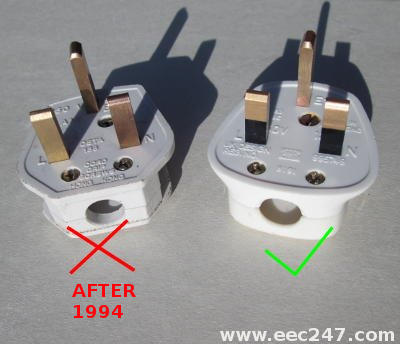
|
The UK "13A Plug & Socket" was introduced in 1947 with the introduction of the Ring Main circuit. The Ring Main circuit was introduced to save scarce copper supplies at the end of World War 2 in 1945. Since 1994, the 13A Plug has been fitted with shrouded power pins to prevent touching the pins while inserting the plug. The longer earth pin should not be shrouded (some internet supplied equipment comes with shrouded earth pins - this is incorrect and dangerous!). Plugs with un-shrouded pins should not be used (this is important for Landlords of rented properties). 13A plugs with un-shrouded power pins are an immediate PAT Test "Fail". |
| Cable Tray | |
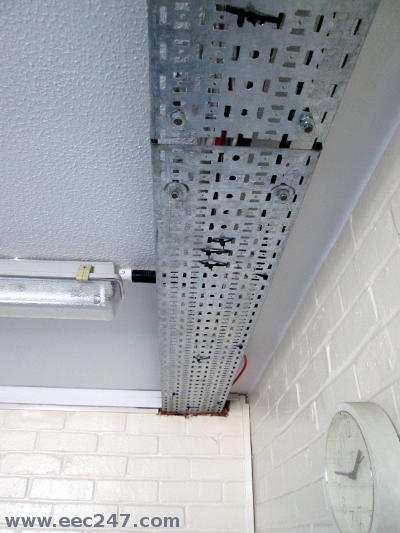
|
A "Cable Tray" is a used in light industrial and commercial premises
(usually above a suspended ceiling) for fixing cables as they are routed to their destinations. It is rarely used in domestic properties. |
| Batten Holder | |
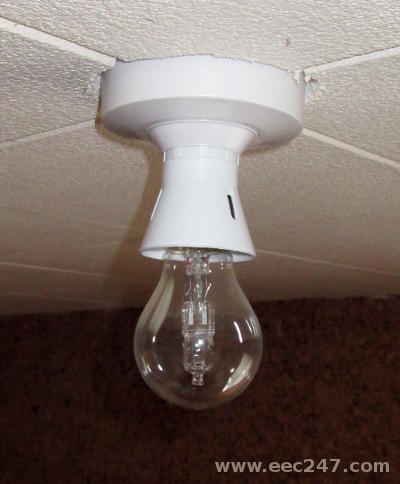

|
A "Batten Holder" is a light fitting for normal lamps (light bulbs) Similar to a Pendant, but without the flex. A Home Office Skirt (also known as a HO Skirt) is often specified on Architects drawings when a Batten Holder is designed in. The term "Home Office" refers to the regulations in force for building construction long before the current Building Regulations were drafted. The "Angled Batten Holder" is ideal for loft spaces and sheds as the lamp hangs vertically downwards when the Batten Holder is attached to one of the rafters. |
| Crawler Boards | |
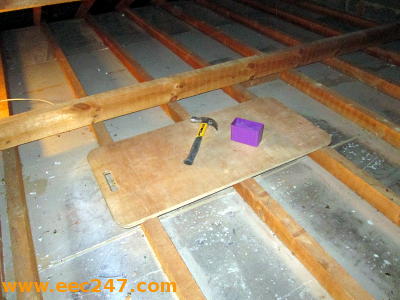
|
"Crawler Boards" are needed when working in un-boarded loft spaces. The plasterboard below the ceiling joists is not strong enough to support a person's weight. |
| Flex Outlet | |
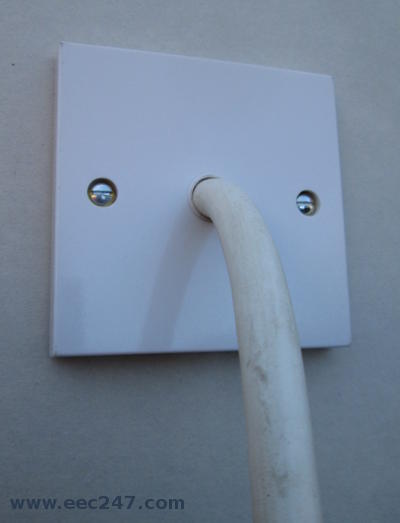
|
A "Flex Outlet" is used to connect a fixed piece of equipment to the electrical supply. It's normally found near electrically heated towel rails and night storage heaters. |
| Fused Spur or Fused Connection Unit (FCU) | |
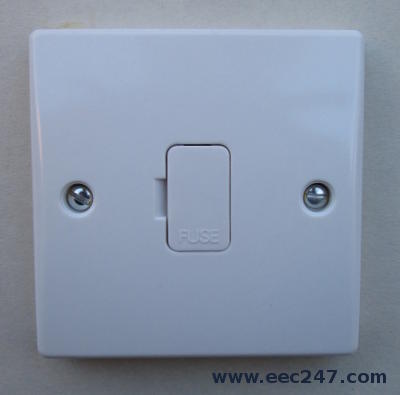
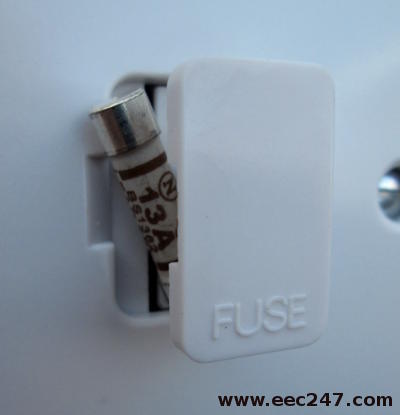
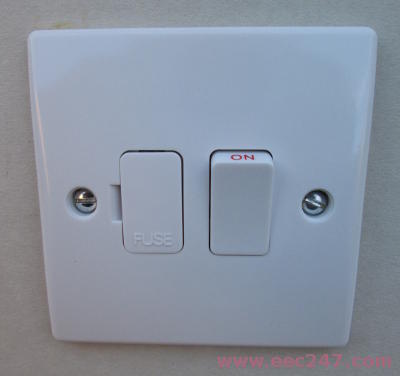
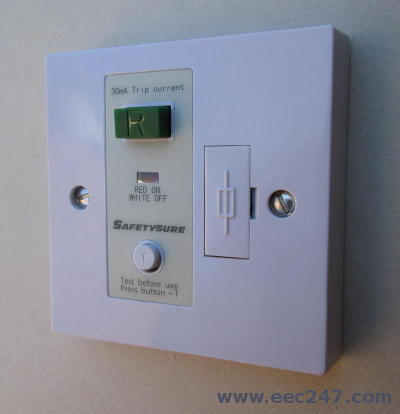
|
A "Fused Spur" or to give it it's proper name a "Fused Connection Unit" (FCU) is used to supply a spur from the ring main or other final circuit for either a number of sockets, a piece of fixed equipment (e.g. a Central Heating Boiler) or lights etc. The FCU is fitted with a plugtop type fuse of the appropriate rating for the type of load and size of cable used. The FCU comes in a number of types and styles:
|
| Lintel | |
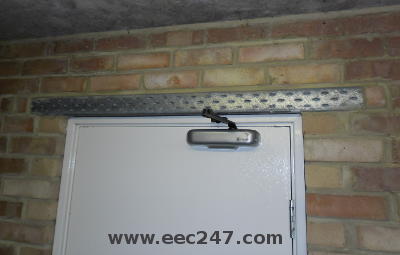
|
A "Lintel" is a beam of concrete or steel used to support the bricks above a door or window. |
| Megger | |
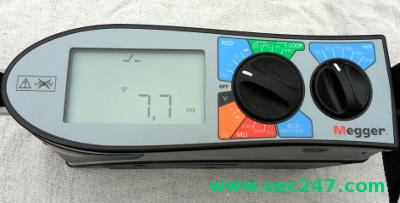
|
A "Megger" has become the generic name for an electrical installation test instrument
in the same way that a vacuum cleaner is a "Hoover". The word can also be used as a verb: "can you Megger this circuit for me?" The Megger brand has been in business for nearly 100 years and still make the best electrical installation test instruments on the market. They are more expensive than cheap imports, but worth the extra cost. |
| Padstone | |

|
A "Padstone" is used to support the end of an RSJ, preventing the RSJ from crushing the bricks or blocks underneath. The padstone is the grey block in the picture, just below the RSJ (black coloured beam). |
| Pendant | |

|
A "pendant" consists of a ceiling rose at the top and a lampholder at the bottom, connected together by a piece of flex. |
| RSJ (Rigid Steel Joist) | |
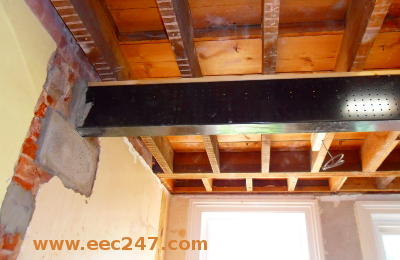
|
An "RSJ" (Rigid Steel Joist) is used when a structural wall in a building is removed. The RSJ supports the weight of the building above by transferring the weight onto the remaining walls. The RSJ fits into the remaining walls and sits on a padstone for stability. The black horizontal beam in the photograph is the RSJ. |
| Stud Wall | |
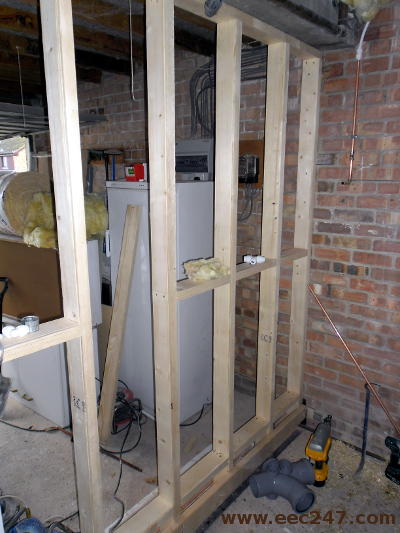
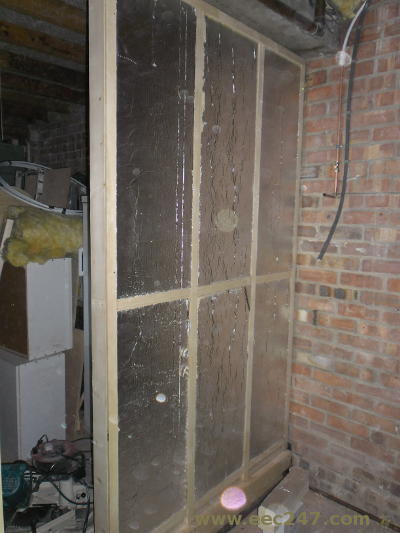
|
A "Stud Wall" is an internal wall, made from a skeleton of wood and covered in plasterboard before being plastered & painted. Modern Stud Walls are filled with insulation to prevent heat loss and prevent the passage of sound between rooms. |
| Surface Fixing (with cable clipped direct to the wall/surface) | |
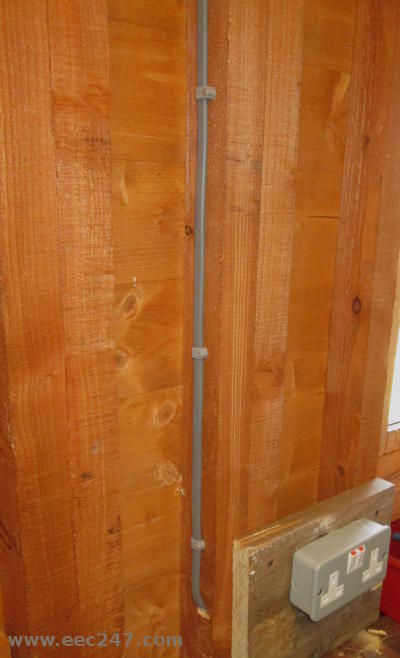
|
"Surface Fixing" with the associated electrical cable clipped direct is the cheapest way of adding extra sockets, lights & light switches. It is ideal for garages and sheds etc. |
| Surface Fixing (with cable in conduit) | |

|
"Surface Fixing" with the associated electrical cable run in conduit (round plastic pipe) is a quick and cheap way of adding extra sockets, lights & light switches. It is ideal for sheds, agricultural buildings etc. |
| Surface Fixing (with cable in trunking) | |
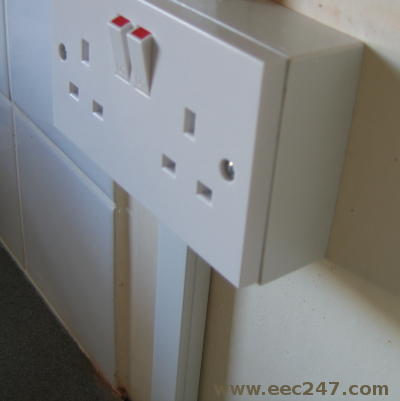
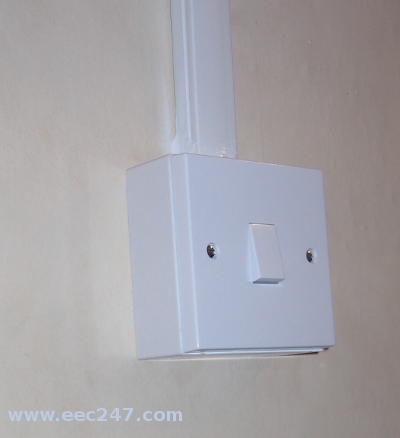
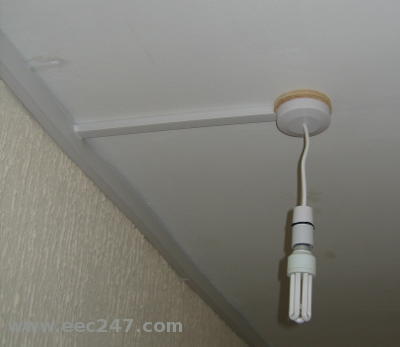
|
"Surface Fixing" with the associated electrical cable run in trunking (square plastic boxing) is a quick and cheap way of adding extra sockets, lights & light switches. It is ideal for utility rooms, sheds etc. |
| 5 Day Wonder |
|
Somebody who has attended one of the many
"from no electrical experience to fully qualified electrician in 5 days" courses.
If you click on the link to see an example of one of the courses, you will notice that the "electricians" do all their training in a classroom with sample electrical circuits attached to plywood panels in bays which it not representative of a typical domestic environment. There are no walls, floors, ceilings, other services (water, gas etc) to cope with. It is not possible to learn everything you need to know about electrics in 5 days. And more to the point, do you really want someone who spent 5 days learning all they know about electrics loose in your home ? |
| 6 Week Wonder |
|
The same as a
5 day wonder,
but they spent 6 weeks in a classroom. Again with little knowledge and no real experience of electrical work at the end of the course. |
